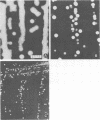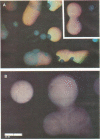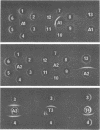Abstract
Physiological, serological, morphological, and cultural differences were observed among 30 Pasteurella multocida cultures of human origin. The usual variations in the fermentation of glycerol, lactose, sorbitol, trehalose, and xylose were observed. Unlike most P. multocida, two cultures did not produce indol. Six serotypes were found. In addition to the widely recognized iridescent, blue, and watery mucoid (circular) colonies, punctiform colonies were observed. None of the cultures were pathogenic for turkeys. Results of the study indicate that one should be aware of the many variable characteristicx of P. multocida of human origin to facilitate indentification.
Full text
PDF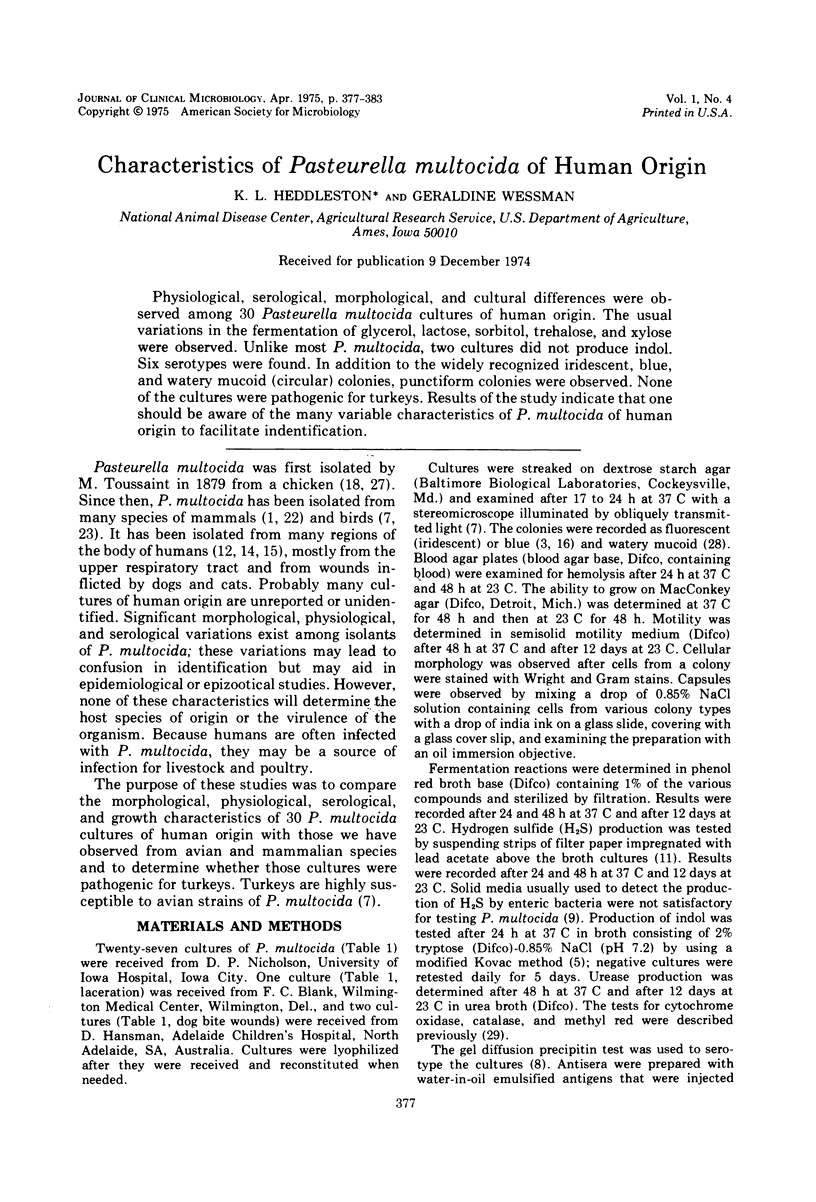
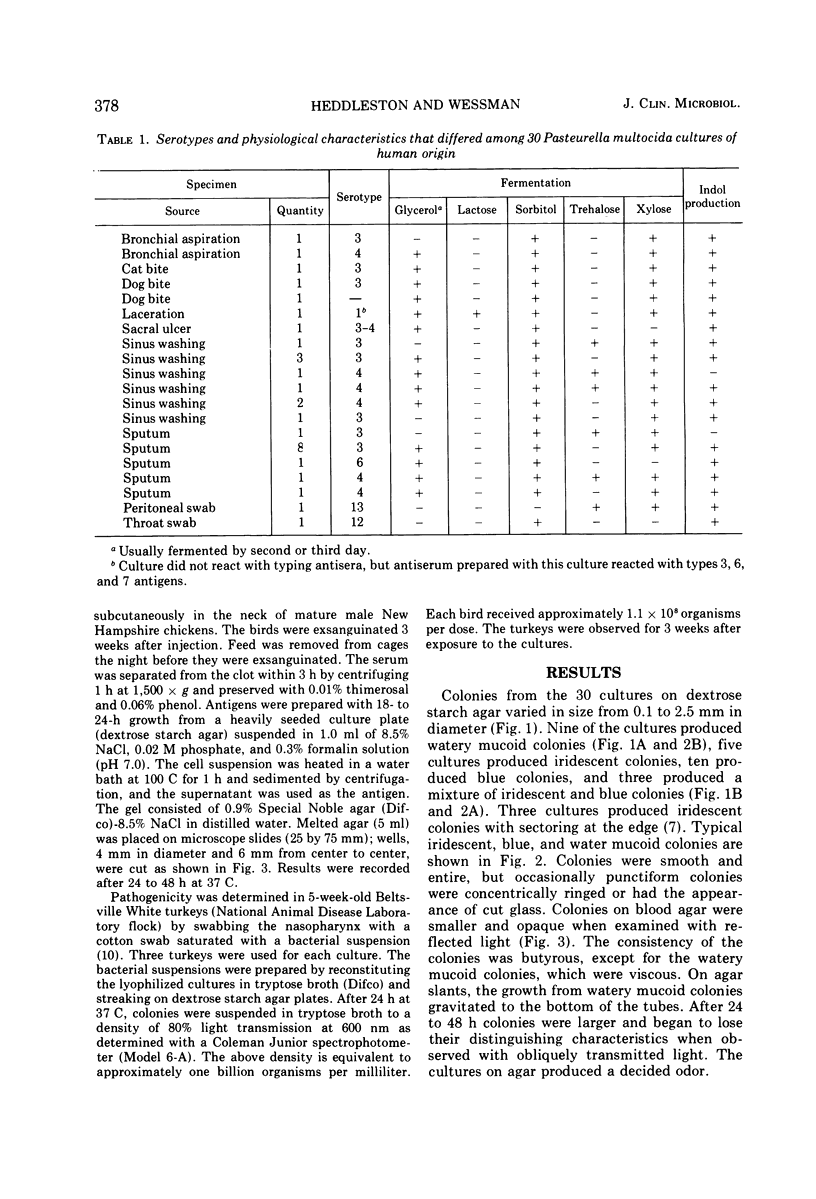

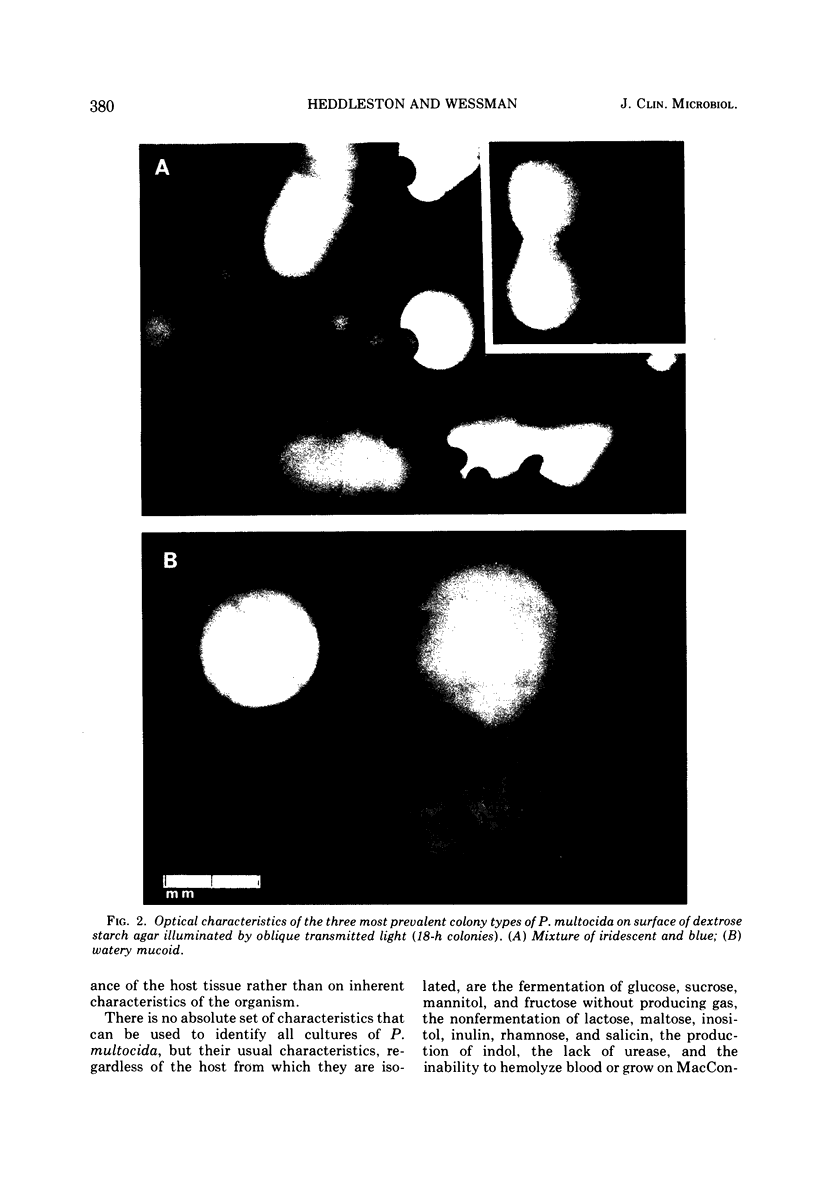

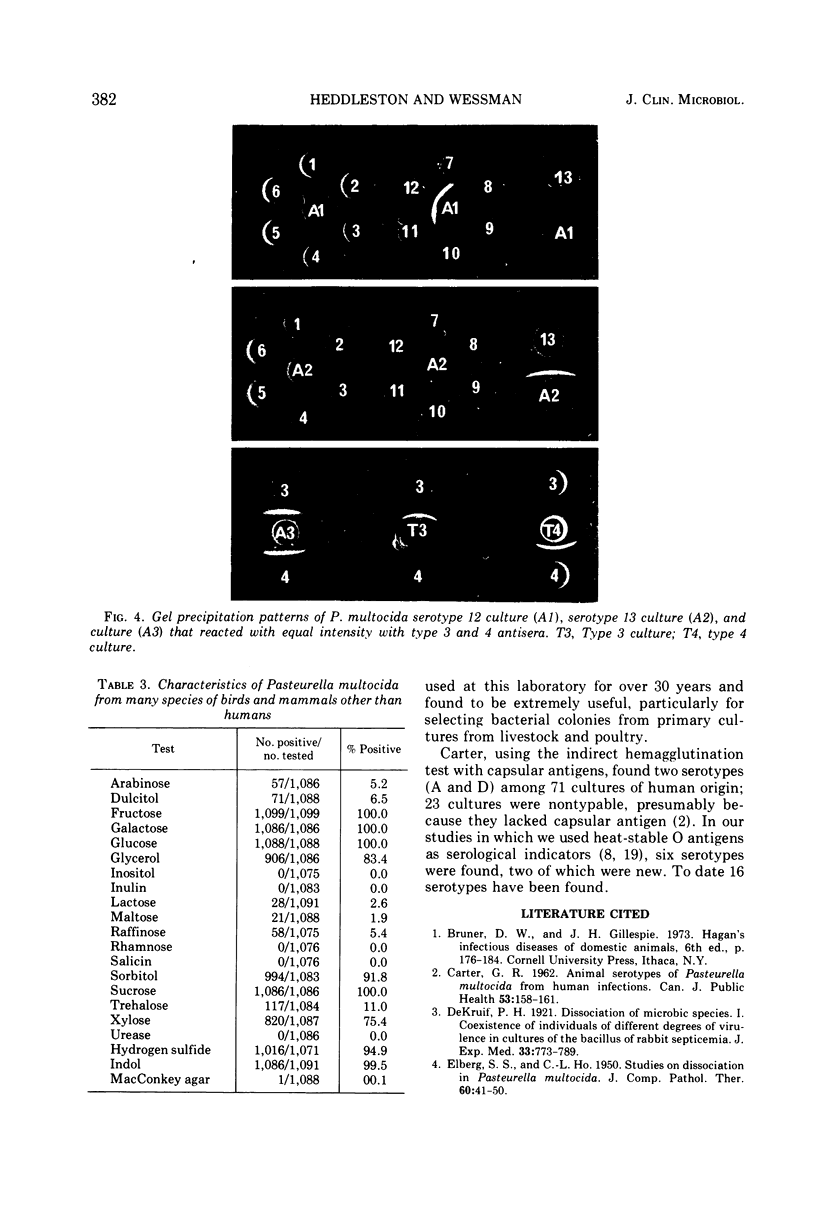

Images in this article
Selected References
These references are in PubMed. This may not be the complete list of references from this article.
- CARTER G. R. Animal serotypes of Pasteurella multocida from human infections. Can J Public Health. 1962 Apr;53:158–161. [PubMed] [Google Scholar]
- GABRIEL S., GADEBUSCH H. H. Modified stable Kovacs' reagent for the detection of indol. Am J Clin Pathol. 1956 Nov;26(11):1373–1375. doi: 10.1093/ajcp/26.11_ts.1373. [DOI] [PubMed] [Google Scholar]
- Gump D. W., Holden R. A. Endocarditis caused by a new species of Pasteurella. Ann Intern Med. 1972 Feb;76(2):275–278. doi: 10.7326/0003-4819-76-2-275. [DOI] [PubMed] [Google Scholar]
- HENDERSON A. PASTEURELLA MULTOCIDA INFECTION IN MAN; A REVIEW OF THE LITERATURE. Antonie Van Leeuwenhoek. 1963;29:359–367. doi: 10.1007/BF02046088. [DOI] [PubMed] [Google Scholar]
- Heddleston K. L., Gallagher J. E., Rebers P. A. Fowl cholera: gel diffusion precipitin test for serotyping Pasteruella multocida from avian species. Avian Dis. 1972 Jul-Sep;16(4):925–936. [PubMed] [Google Scholar]
- Heddleston K. L., Goodson T., Leibovitz L., Angstrom C. I. Serological and biochemical characteristics of Pasteurella multocida from free-flying birds and poultry. Avian Dis. 1972 Jul-Sep;16(4):729–734. [PubMed] [Google Scholar]
- Heddleston K. L., Rhoades K. R., Rebers P. A. Experimental pasteurellosis: comparative studies on Pasteurella multocida from Asia, Africa, and North America. Am J Vet Res. 1967 Jul;28(125):1003–1012. [PubMed] [Google Scholar]
- Holmes M. A., Brandon G. Pasteurella multocida infections in 16 persons in Oregon. Public Health Rep. 1965 Dec;80(12):1107–1112. [PMC free article] [PubMed] [Google Scholar]
- Hubbert W. T., Rosen M. N. Pasteurella multocida Infections: I. Pasteurella Multocida Infection Due to Animal Bite. Am J Public Health Nations Health. 1970 Jun;60(6):1103–1108. doi: 10.2105/ajph.60.6.1103. [DOI] [PMC free article] [PubMed] [Google Scholar]
- Hubbert W. T., Rosen M. N. Pasteurella multocida infections. II. Pasteurella multocida infection in man unrelated to animal bite. Am J Public Health Nations Health. 1970 Jun;60(6):1109–1117. doi: 10.2105/ajph.60.6.1109. [DOI] [PMC free article] [PubMed] [Google Scholar]
- REISINGER R. C., HEDDLESTON K. L., MANTHEI C. A. A myxovirus (SF-4) associated with shipping fever of cattle. J Am Vet Med Assoc. 1959 Aug 1;135(3):147–152. [PubMed] [Google Scholar]
- TALBOT J. M., SNEATH P. H. A taxonomic study of Pasteuralla septica, especially of strains isolated from human sources. J Gen Microbiol. 1960 Feb;22:303–311. doi: 10.1099/00221287-22-1-303. [DOI] [PubMed] [Google Scholar]
- Wessman G. E., Hilker G. Characterization of Pasteurella hemolytica isolated from the respiratory tract of cattle. Can J Comp Med. 1968 Jul;32(3):498–504. [PMC free article] [PubMed] [Google Scholar]



